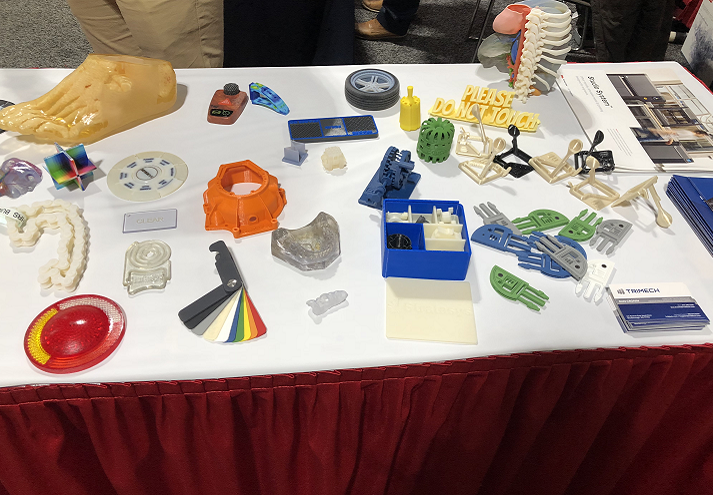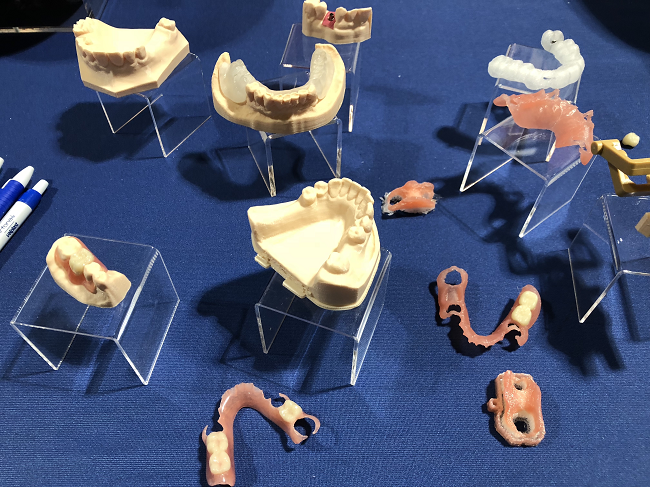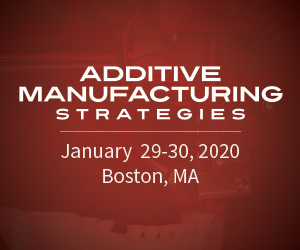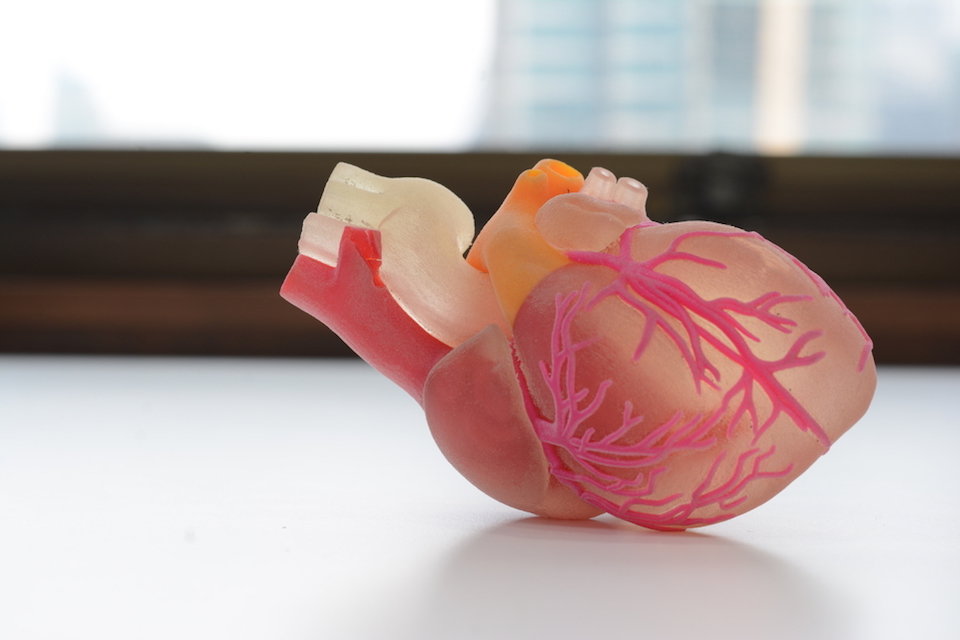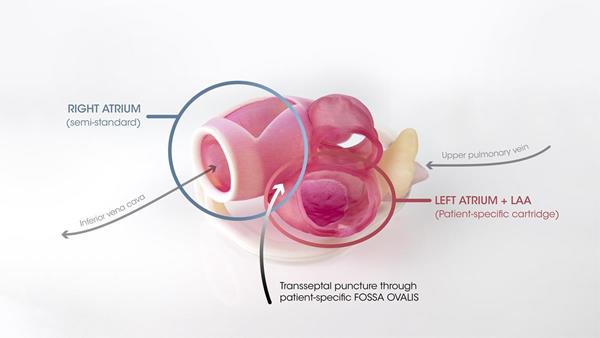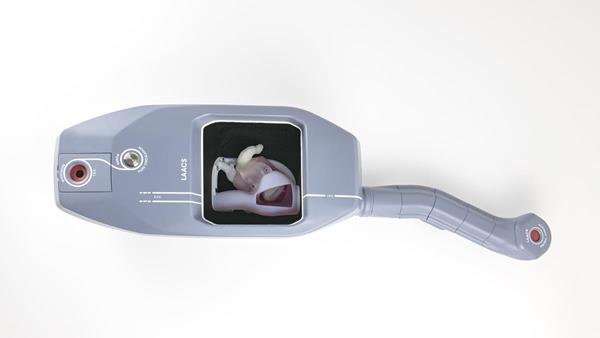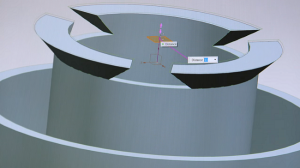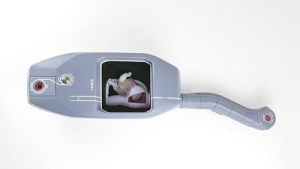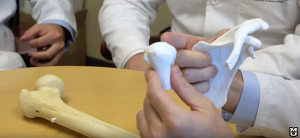The second annual Additive Manufacturing Strategies (AMS) summit, “The Future of 3D Printing in Medicine and Dentistry,” was co-hosted by 3DPrint.com and SmarTech Markets Publishing and held in Boston just two short weeks ago. In addition to two separate tracks for medical and dental 3D printing, keynote presentations on the democratization of medicine and 3D printed medical devices, two pre-conference workshops, and a startup showdown, there was also an exhibition floor at the event with about a dozen booths to visit.
“It’s great,” a representative at the Trimech booth told me when I stopped by to ask how the event was going on the first full day of the summit. “So far really exciting, good conversations happening.”
The table at Trimech’s booth had all sorts of prints sitting out, including a colorful, detailed human skull featuring brains and veins that I was told had been 3D printed on the Stratasys J750.
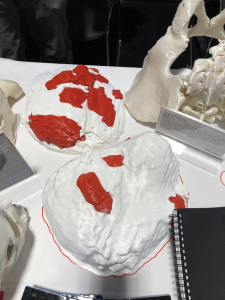 Ultimaker‘s booth was busy, and I was told that there had been plenty of “good quality” conversations at the booth. On the first day of the summit, the Ultimaker team had been 3D printing a uterus model in white material, with fibroids printed in red material; however, they ran out of white by the second day and so were instead 3D printing a bone model in red.
Ultimaker‘s booth was busy, and I was told that there had been plenty of “good quality” conversations at the booth. On the first day of the summit, the Ultimaker team had been 3D printing a uterus model in white material, with fibroids printed in red material; however, they ran out of white by the second day and so were instead 3D printing a bone model in red.
I stopped by the Trumpf booth, which had some examples of 3D printed dental solutions on display, to speak with the representatives there for a few minutes.
“Of course medical in additive is a big thing,” Trumpf’s Technical Sales Manager Dave Locke told me. “So we’re interested in participating in these activities.”
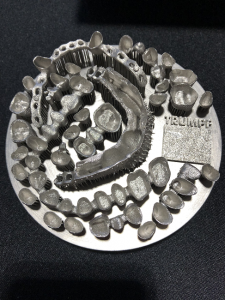 Graham at the SLM Solutions booth also confirmed that good conversations were being had in the exhibition hall at the summit, and showed me some of the dental applications that they had on display…I saw a lot of 3D printed teeth made out of cobalt chrome in Boston.
Graham at the SLM Solutions booth also confirmed that good conversations were being had in the exhibition hall at the summit, and showed me some of the dental applications that they had on display…I saw a lot of 3D printed teeth made out of cobalt chrome in Boston.
While the r.Pod desktop dental 3D printer at the Arfona booth had been busily 3D printing dentures on the previous day, it was just on display during the last day of the event due to a small thing that needed to be fixed.
“We have a few different materials that are all for dental applications, but kind of the core product is this nylon, which we use for partial dentures. So this is a long term dental nylon,” the Arfona rep told me, showing me some completed dentures that had been through post-processing. “Those are all using just procedures that are kind of typical for a dental lab technician.”
I learned that Arfona could 3D print a set of dentures in about two hours, and finish the necessary post-processing in about another 20-30 minutes.
“It’s pretty fast. I mean, that’s something that typically would be spread out over…I mean, using conventional processes, over 4 or 5 dental appointments. And now it can be done in two.”
Anything that reduces the amount of time one has to sit in the dentist’s chair is aces, in my humble opinion.
I attended a few other sessions during AMS 2019, including one on 3D printed prosthetics that was moderated by Asimov Ventures’ Tyler Benster. Matthew Griffin, the Director of Community for Ultimaker North America, and Maria Esquela, the founder of 501c3 non-profit Alliance for Project Based Learning Solutions (APBLS or e-NABLE Alliance), both spoke on the topic.
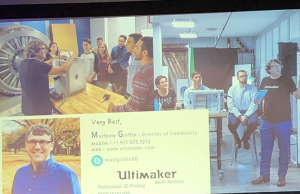 Griffin shared a short clip from a 2017 Ultimaker video for “Hands for Haiti” about setting up 3D printing workshops in developing countries so the community can benefit from high-tech, 3D printed prosthetics. He also discussed how e-NABLE is not an organization, but a movement, and then Esquela “picked up Matt’s story a bit,” noting that she and her daughter were actually volunteers #71 and #72 for the heartwarming prosthetics network, which now has over 11,000 volunteers that work to provide 3D printed prosthetics to the millions of people who don’t have access to this kind of care.
Griffin shared a short clip from a 2017 Ultimaker video for “Hands for Haiti” about setting up 3D printing workshops in developing countries so the community can benefit from high-tech, 3D printed prosthetics. He also discussed how e-NABLE is not an organization, but a movement, and then Esquela “picked up Matt’s story a bit,” noting that she and her daughter were actually volunteers #71 and #72 for the heartwarming prosthetics network, which now has over 11,000 volunteers that work to provide 3D printed prosthetics to the millions of people who don’t have access to this kind of care.
Benster moderated the question session, but also asked one of his own. He wanted to know if Griffin and Esquela had any tips or suggestions for attendees with a business background about how to harness this type of creativity without feeling threatened by it. Griffin noted that there are lots of opportunities in the healthcare industry for testing out ideas earlier, and that people are “leaning on things,” such as community-based projects, in order to solve a problem, which then incites a feeling of empathy, “which you can then build on” when working to tackle a problem together.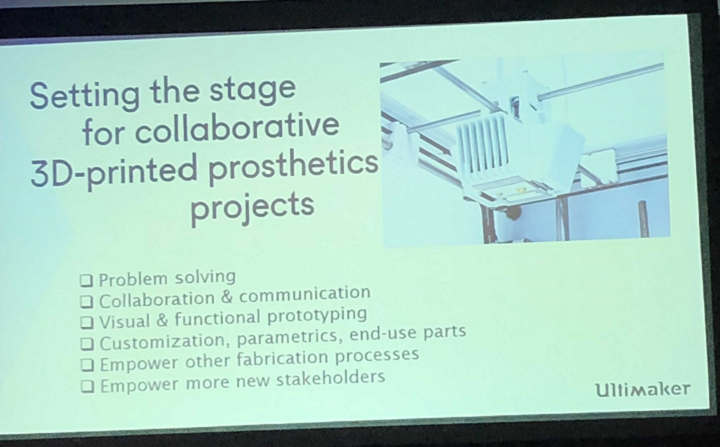
I stayed on the medical track to attend a panel on 3D printing being used in surgical planning and modeling, which was moderated by SmarTech’s Scott Dunham. Alyssa Glennon, a Principal Engineer for Business Development at Materialise, and Carolyn DeVasto, the Global Vice President of Communications at medtech company BIOMODEX, were the speakers on the panel.
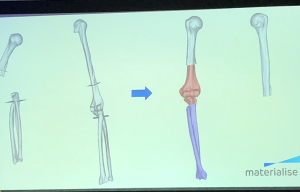 Glennon presented a case where a surgical team used 3D printed guides and bone models to test out different surgical options for an adult. This helped the virtual plan translate better in the operating room, and as a result, the patient was able to bend his arm just ten days after the surgery, which he had not been able to do for seven years.
Glennon presented a case where a surgical team used 3D printed guides and bone models to test out different surgical options for an adult. This helped the virtual plan translate better in the operating room, and as a result, the patient was able to bend his arm just ten days after the surgery, which he had not been able to do for seven years.
Glennon detailed some of the many benefits of using 3D printing in a medical setting, such as interdisciplinary collaboration and better surgical preparation, but also noted that the regulatory environment is a major challenge for the medical 3D printing industry.
Glennon asked, “So how is Materialise providing a safe environment in hospitals for medical 3D printing?”
The answer: a solid understanding of the regulatory environment. The company offers an FDA-approved certification program for 3D printer manufacturers to have their products tested and validated for use with Materialise’s FDA-cleared Mimics inPrint software, which converts medical images into 3D print-ready files.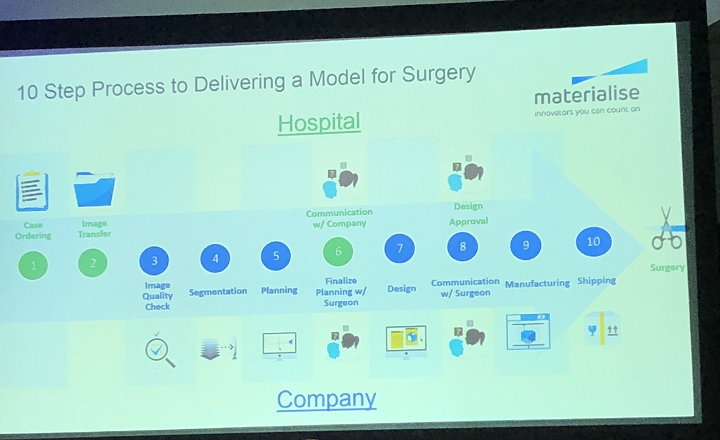
DeVasto, who explained that BIOMODEX is focused on the neurovascular field, stated that there are many challenges when it comes to biomechanics, since human tissue is so complex. According to her presentation, 36% of operating room errors could be avoided with the help of planning, which is what drives the company.
She noted that surgeons rely on sight and touch. The company’s algorithm builds 3D printable composite materials that are designed specifically to provide important tactile feedback. DeVasto explained that 3D printing is so important in healthcare planning because it can help enable better patient outcomes.
 During the Q&A, Dunham asked if they saw any specific niches where a specific type of planning or rehearsal model could match with a specific method of 3D printing. Glennon said that this came down to two specific factors: cost and purpose.
During the Q&A, Dunham asked if they saw any specific niches where a specific type of planning or rehearsal model could match with a specific method of 3D printing. Glennon said that this came down to two specific factors: cost and purpose.
“The guides and models I showed are sintered nylon orthopedic parts,” Glennon said, explaining that short-term, low value parts used in surgery need to be made out of material that can hold up in an autoclave, but also be cost-effective.
DeVasto said that the answer to Dunham’s question “comes down to materials,” noting that BIOMODEX is very specific in what its algorithm can print with.
Don’t forget, the third annual Additive Manufacturing Strategies summit will be held from January 29-30, 2020 and will include a metal 3D printing track. To keep up to date on registration information and everything else for AMS 2020, sign up for our newsletter here.
Discuss this news and other 3D printing topics at 3DPrintBoard.com or share your thoughts in the comments below.
[Images: Sarah Saunders]


